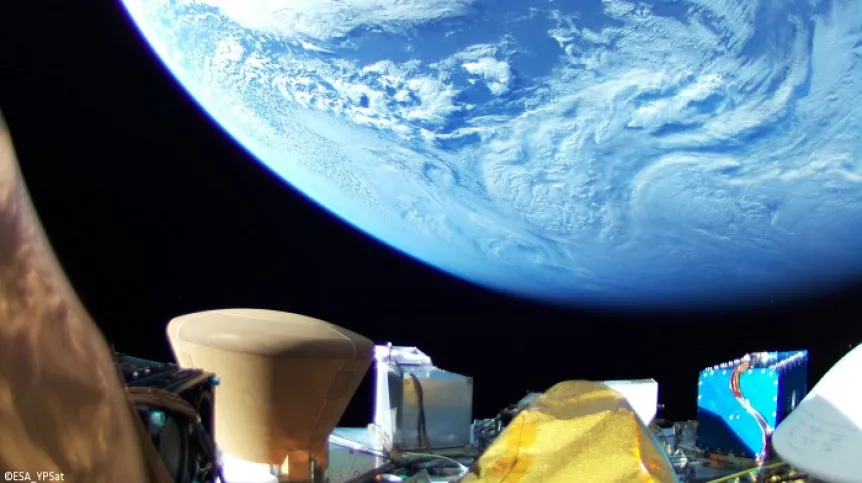
The Polish company Scanway - together with the European Space Agency and ArianeGroup - presented the first photos from the inaugural flight of the Ariane 6 rocket. These images confirm the operation of the vision system offered by Scanway in space conditions, the company reports.
The ESA's Ariane 6 rocket was launched on July 9 in the evening (Polish time) from the spaceport in French Guiana.
'The images recorded by the two-camera optical system confirm the operation of the vision system offered by Scanway in space conditions, making it yet another flight heritage product offered by the company’, the company's press release says. 'Flight heritage' is a certificate confirming that the solution has proven successful in the space environment.
According to the company, SCS (Scanway Camera System), which is part of the YPSat (Young Professional Satellite) project taking part in the Ariane 6 flight, is based on solutions 'previously proven by Scanway during its own STAR VIBE space mission conducted last year'.
'Flight heritage for our cameras supporting rocket launches is valuable and important for the possible commercialisation of this product line in the future. Trends and demand reported to us indicate a business need for the development of such products, enabling a number of valuable tasks, including self-diagnostics of satellites and launch vehicles, and any space equipment whose owner would like to see what is happening to it in orbit', says Scanway S.A. CEO Jędrzej Kowalewski.
According to the company, the Scanway system consists of two wide-angle cameras, electronics and mechanical interfaces 'capable of providing image in two modes: video up to 1080p and 30 fps or 720p and 60 fps, and photo with a resolution of 12.3 Mpix'. 'The data obtained and provided by Scanway will be used by the European Space Agency for detailed analyses and optimisation of subsequent Ariane 6 flights', the press release says.
Scanway's operations director, Mikołaj Podgórski, says that the first photos published by the company were taken with cameras with a resolution of 12.3 Mpix. A video was also recorded, compressed and successfully sent to Earth. 'In addition to its aesthetic value, which in our opinion is spectacular, it is yet another demonstration of the skills of the Scanway team in the area in which we specialise, i.e. cameras, telescopes and, in general, observation technology from space', says Podgórski.
'We are not resting on our laurels, because in a moment we are going into space again, this time in the EagleEye project, the largest Polish satellite in the history of the development of the domestic space sector. This project is implemented in a consortium with Creotech Instruments S.A. and the Space Research Center of the Polish Academy of Sciences, and we supplied an optical telescope capable of imaging the Earth at a resolution of 1-2 m per pixel, depending on the current orbit. This is the largest telescope developed, built and used in Poland so far and another milestone in the development of our company', he adds.
Ariane 6 is the successor to the Ariane 5 rocket, used between 1996 and 2023, which made a total of 117 flights, 112 of them successful. Ariane 6 currently has 30 flights contracted, the second flight is scheduled to take place later this year, and six more are planned for 2025.
The Ariane 6 rocket was developed by the European Space Agency (ESA) in cooperation with entities from 13 European countries, and the main contractor responsible for the construction of the rocket was the space company ArianeGroup - a joint venture of Airbus Defense and Space and Safran. (PAP)
bar/ kap/
tr. RL













